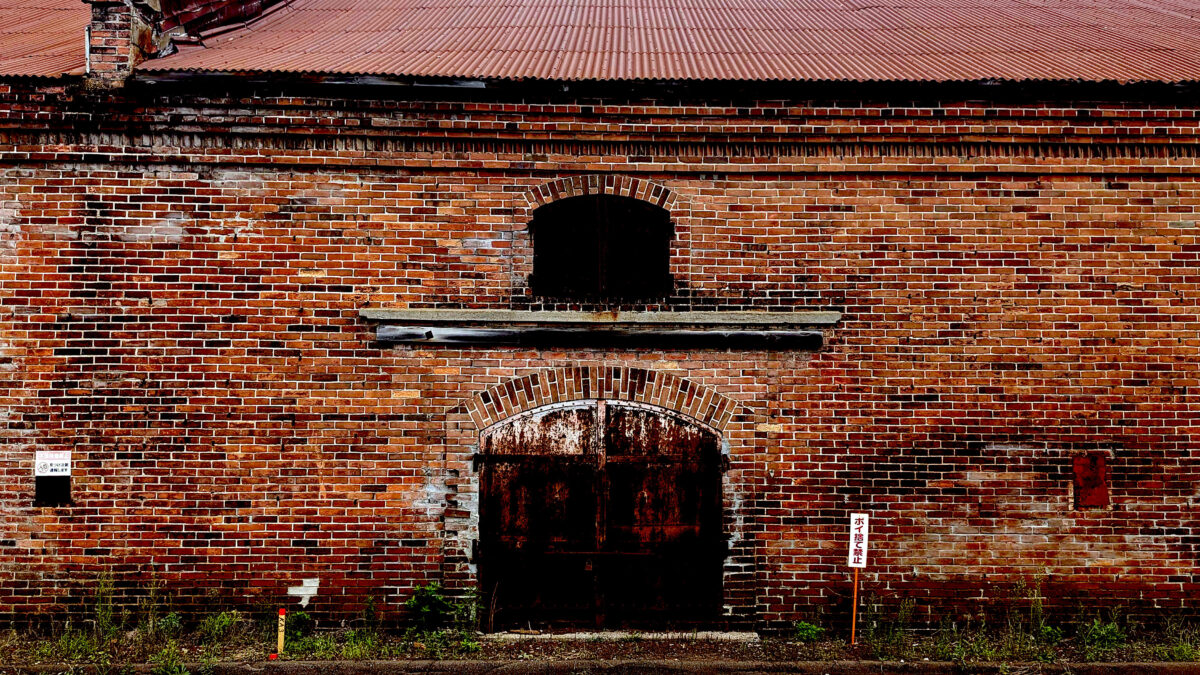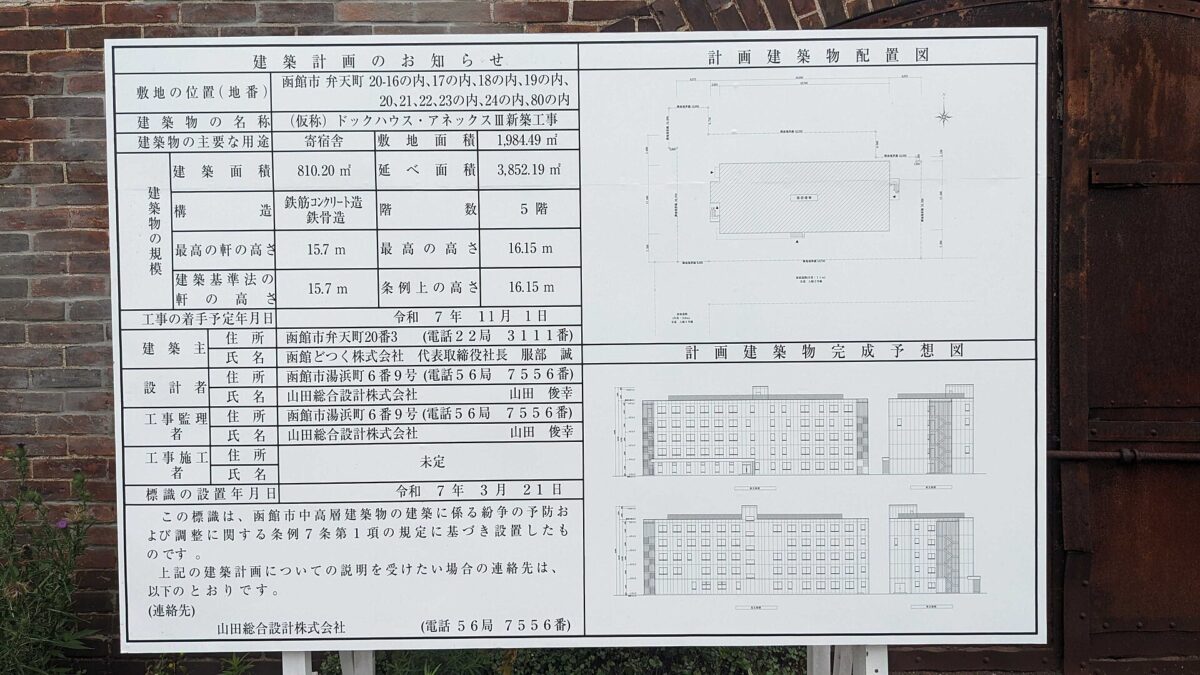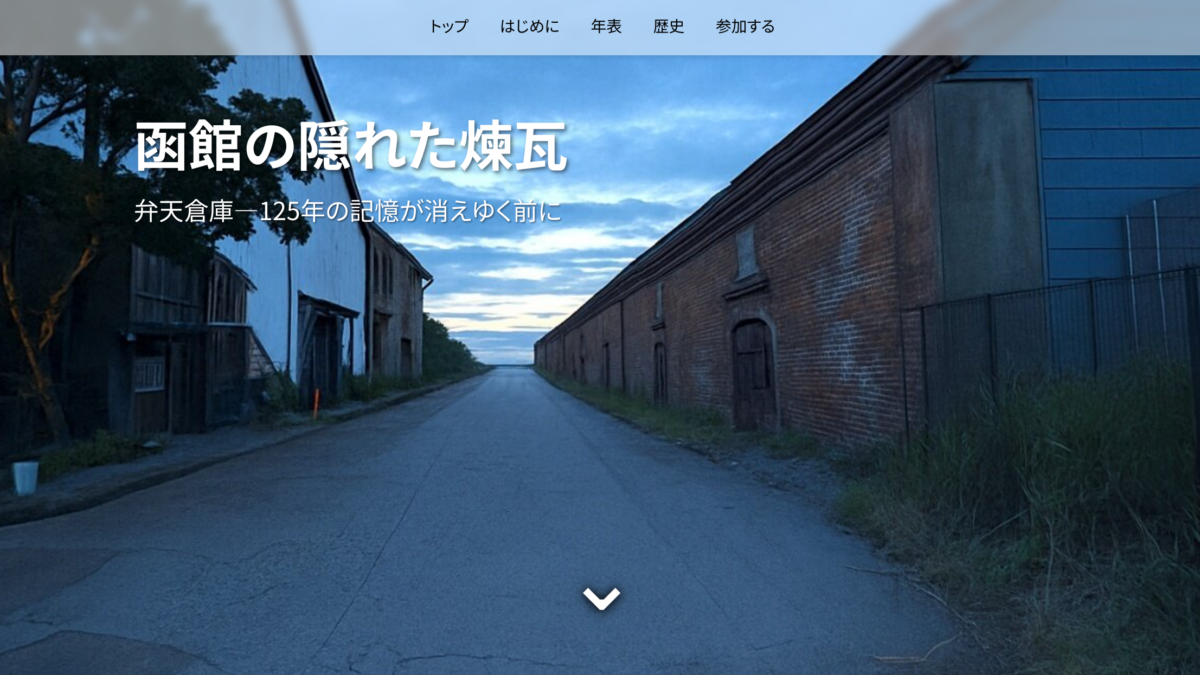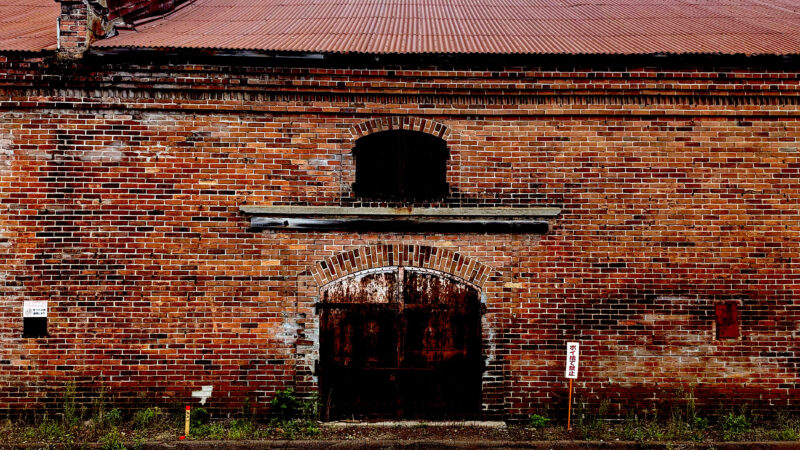
Hakodate Dock Red Brick Warehouses. Photo taken by Shioyama via Wikimedia under Creative Commons CC0 1.0 Universal Public Domain Dedication.
A post on X in July by rock star Teru of the band Glay caught thousands of fans off guard, triggering a debate about Japan’s commitment to preserving its industrial heritage. Referring to the Biennale Art Festival he is organizing in his home city of Hakodate, Teru wrote:
函館ビエンナーレ芸術祭のメイン会場の候補にしていた赤レンガ倉庫を視察しに行ったら…
この建物と金森を見て、ベネチアのビエンナーレの構想が生まれたのに…
この建物を守りたい。
なんとかならないもんだろうか? pic.twitter.com/cL79si9OQm
— TERU (@TE_RUR_ET) July 14, 2025
I went to take a look at the red brick warehouses that I was considering as a candidate for the main venue of the Hakodate Biennale Art Festival…
It was seeing these buildings and the Kanemori Warehouses that inspired organizing a Biennale like the one in Venice…
I want to save these buildings.
Is there nothing we can do?
The post went viral, attracting thousands of likes and a stream of responses on X and other platforms. It went on to spark a last-minute campaign to save a forgotten row of red brick warehouses that face imminent destruction.
Officially known as the Hakodate Dock Red Brick Warehouses, the buildings are among the oldest industrial structures in the port city of Hakodate, in Japan’s northernmost island of Hokkaido. Built in 1901, they predate most other similar brick buildings in Japan, yet remarkably have been in continuous use over the nearly 125 years since their construction.
Whereas Hakodate’s famous Kanemori Red Brick Warehouses, built eight years later, were developed into a shopping mall attracting hundreds of thousands of tourists every year, the dock warehouses have been largely forgotten. Known only to dock workers and a handful of local residents, academics, and historians, they have nonetheless survived multiple devastating fires and other natural disasters in the city to make it intact to their 125th year in 2025.
Among the widely-read responses to Teru’s post was one from Maiko Tsujibayashi, an architect with firsthand experience saving historic buildings. In 2021, she successfully crowdfunded the restoration of a mountain villa in Hakone Sengokuhara designed by renowned architect Junzo Yoshimura. Tsujibayashi offered the following practical advice based on her experience:
文化財の継承、改修と保存の活動をしています
元の持主様による解体新築の計画で掲示されていますが、工事期間の記載がありませんので、現実的には丁寧にその価値と利活用をプレゼンし解体を延期して頂いたり勝手ながら計画の変更をお願いする活動が必要かと思います 持主様にも利益のあることかと!
— 吉村順三 仙石原の家 1969 (@maiko0601) July 14, 2025
I’m involved in cultural property preservation, renovation, and conservation.
While the original owner has posted plans for demolition and a new building, there’s no actual construction period listed, so realistically, I think we need to organize to carefully present the value and potential uses [of the buildings] to request a postponement of demolition, or even go as far as to ask for changes to the plans. This could be profitable for the owner too!
The owner in question, Hakodate Dock, did in fact post a sign announcing plans for the site, which can be seen in the background of the photo in Teru’s viral tweet, with more details in the photo below. Erected on March 21st, the sign attracted little attention until Teru wrote about it.

Announcement for the Hakodate Dock Red Brick Warehouses site (dated March 21, 2025). By Shioyama via Wikipedia under CC0 Public Domain.
Unfortunately, the sign is quite specific about the timeline: the construction of a dormitory annex (寄宿舎) is to begin on November 1, leaving only weeks before the warehouse demolition must start. While not stated explicitly, the dormitory is widely known to be needed to support shipbuilding for Japan’s Self-Defense Forces (SDF). Given the current geopolitical context and escalating tensions in the region, Hakodate has become a key port city for Japan’s naval defense strategy.
The struggle to save the warehouses thus pits preservation of cultural heritage against development and expanding shipbuilding capacity. There is bitter irony in the fact that the buildings, known at the time as the “Benten Warehouses,” were acquired by Hakodate Dock in 1943 to support military shipbuilding in World War II. Eighty-two years later, they face demolition for the same purpose.
With little of this context available at the time of Teru’s post, Glay’s fans could only speculate, but many saw potential in the warehouses. One longtime fan responded:
TERUさん!函館には、少し手を加えれば現代でも十分使えそうな建物がたくさんありますね。この雰囲気…外観を残しつつ綺麗に改装すればレトロで趣のある建物に生まれ変わりそうです。アトリエや、雑貨屋さん、セレクトショップ、カフェなど…。解体してしまうのはもったいないですね🥲
— chizu (@kse_chizu1009) July 14, 2025
Teru-san! Hakodate has so many buildings that could still be perfectly usable today with just a little work. What an atmosphere [they create]… if they kept the exterior and renovated it nicely, it could be reborn as a retro building with real character. It could house studios, shops, boutiques, cafes… It would be such a waste to demolish them.
One Hokkaido resident and Glay fan familiar with local preservation projects responded:
ニセコ町のニセコ中央倉庫群で働いていたことがあり、古い石蔵や木造の倉庫に手をかけお金もかかったそうですが、利活用されています。
いまの耐震基準等もあり費用はかかると思いますが、クラファンでTERUさんと大泉市長の呼びかけがあれば🔥
函館も素敵な建造物が魅力のひとつですよね✨
— konayuki707 (@bono2525) July 14, 2025
I used to work at the Niseko Central Warehouse Complex in Niseko Town, where they’ve renovated old stone warehouses and wooden warehouses — it apparently cost a lot of money, but they’re being actively used now. With current earthquake resistance standards and such, I think it would be expensive, but if Teru-san and Mayor Oizumi called for crowdfunding, [it could work]. Hakodate’s wonderful buildings are one of its charms, aren’t they?
Given the sparsity of information about the warehouses, a website has been created to shine a light on their history, and a photo exhibit by Hakodate-born photographer Kino Koike is being organized in a gallery just across the street, to take place in early September. [Disclosure: the author is involved in these activities.]

Screenshot from the front page of the website hakodaterenga.jp. Fair use.
Koike, who was already exhibiting work at the Hakodate Museum of Art, writes that he felt compelled to document the threatened warehouses:
気がつくと函館美術館での展示も折り返し。あと2週間半!終わりが見えるとさみしくなりますね。お見逃しなく!!
終わりが見えるというと、 先週の在廊中、弁天台場跡のすぐ近くの函館どつく赤レンガ倉庫を撮影してきました。取り壊されると聞くまでは当たり前の風景としか思っていませんでしたが、いざ無くなると聞くと寂しいですね。せめて記録に残したいと思い湿板写真に写してきました。
My exhibition at the Hakodate Museum of Art is already halfway done. Just two and a half weeks left! It feels a bit sad when you can see the end approaching. Don’t miss it!!
Speaking of seeing an end approaching, while in town for the gallery exhibit last week, I photographed the Hakodate Dock Red Brick Warehouses right near the Benten Daiba monument. Until I heard they were going to be demolished, I only thought of them as part of the everyday landscape, but now that I hear they’ll be gone, I feel really sad. I wanted to at least preserve a record of them, so I captured them using wet plate photography.
The monument Koike mentions commemorates the Benten Daiba, a coastal battery that once stood in the same Benten-chō (弁天町) neighborhood as the dock warehouses. Benten Daiba played a key role in the famous Battle of Hakodate that marked the end of Japan’s samurai era.
In July, the Benten Daiba Monument was featured prominently on the popular NHK (Nippon Hoso Kyokai, meaning Japan Broadcasting Corporation) television program “Bura Tamori,” which regularly achieves viewership ratings over 10 percent nationwide. Yet in another cruel twist of fate, the program made no mention of the Hakodate Dock warehouses and their future demolition, even though they sit just a dozen feet away from the monument.
With only weeks left, and local media refusing to pick up the story, locals are losing hope of any change to the current demolition plans.
Yet the campaign organizers haven’t given up. The September photo exhibition, the growing attention to the website documenting the warehouses’ history, and continuing social media pressure represent a last-ditch effort to demonstrate the buildings’ value.
With crowdfunding successful for other heritage buildings across Japan, supporters hope that even at this late hour, a solution can be found that both preserves Hakodate’s industrial heritage and meets its modern defense needs. Time, however, is running out, and a rock star’s plea alone will not turn the tide.


AloJapan.com